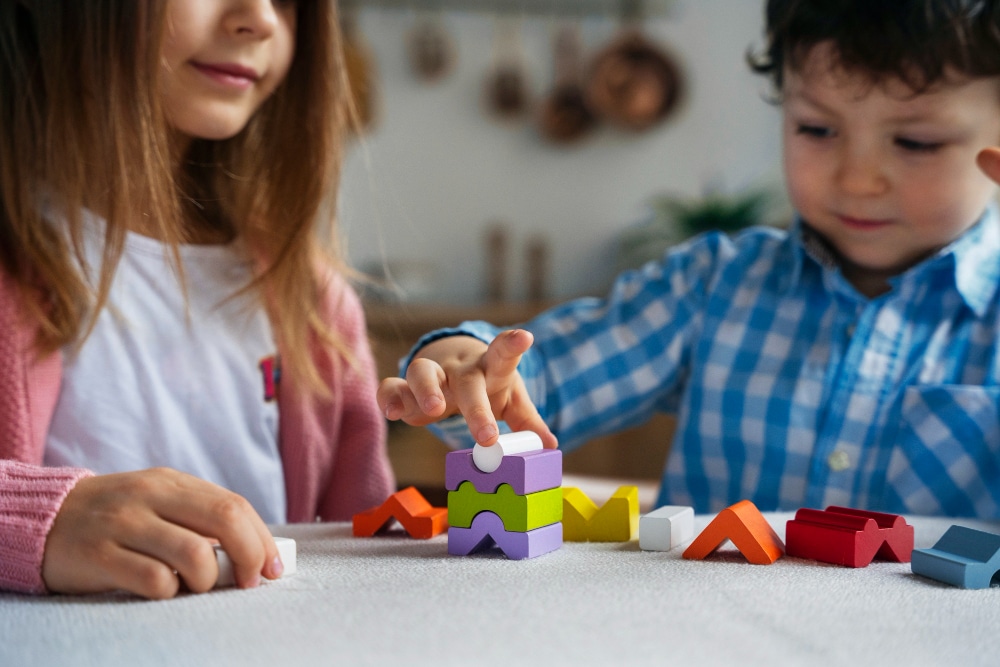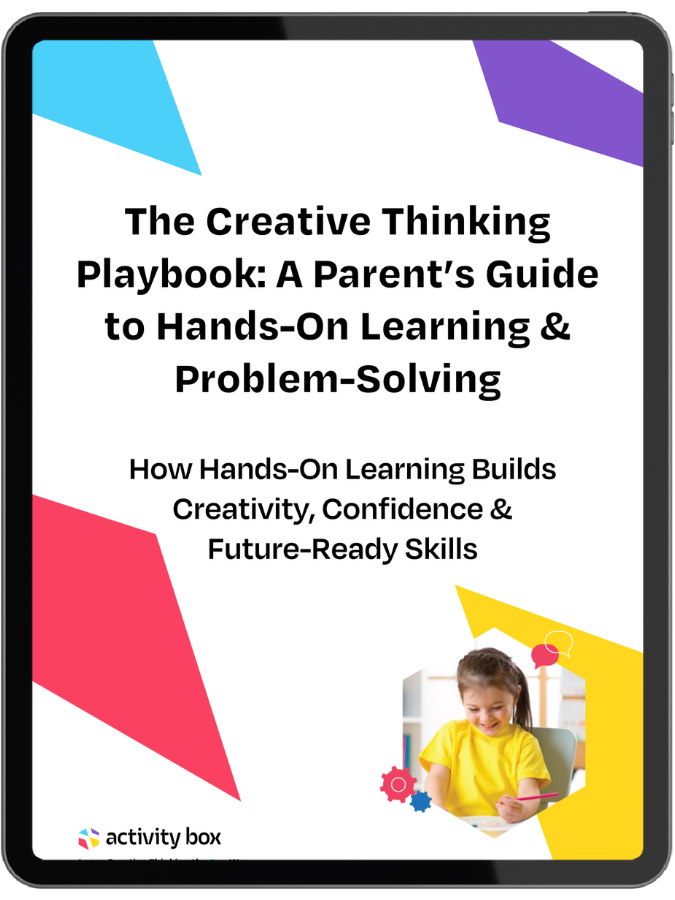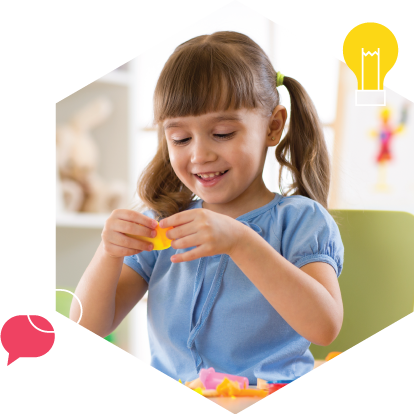
The Link Between Creativity and Problem-Solving: How Early Creative Experiences Develop Critical Thinking
Key Takeaways
| Aspect | Summary |
| Why This Topic Matters | Creativity enhances a child’s ability to approach challenges with flexible thinking and multiple solutions. |
| How Creativity Fuels Problem-Solving | Hands-on activities encourage experimentation, resilience, and decision-making. |
| The Role of Play-Based Learning | Creative play teaches children to evaluate options and adapt to new situations. |
| Cognitive Flexibility & Divergent Thinking | Open-ended play fosters the ability to see multiple solutions rather than a single correct answer. |
| Practical Applications | Parents and educators can use creativity-focused activities to enhance problem-solving skills in children. |
Why Creativity is the Key to Problem-Solving
Did you know that creative thinking is one of the most important skills for solving real-world problems? Studies show that children who engage in creative play develop stronger cognitive flexibility, adaptability, and innovative thinking—skills that are essential for navigating life’s challenges.
This article explores the strong connection between creativity and problem-solving, backed by research and real-world applications.
📖 Related Read: Cognitive Benefits of Creative Play
How Creativity Develops Problem-Solving Skills
The Science Behind Creativity and Critical Thinking
Creative play helps children think outside the box, test new ideas, and experiment with different solutions. Neuroscientists have found that when children engage in creative problem-solving, they activate the prefrontal cortex, which is responsible for:
- Cognitive flexibility – The ability to adapt to new challenges
- Working memory – Holding and organizing information while solving problems.
- Decision-making – Evaluating different options and choosing the best course of action.
🔬 Research Insight:
According to the American Psychological Association (APA), children who regularly engage in imaginative and creative play score higher on problem-solving tests and demonstrate greater cognitive adaptability.
External Source: Read the full APA study.
Additional Research: A study by the National Inventors Hall of Fame highlights that creative problem-solving skills in early childhood enhance critical thinking and set the foundation for future innovation.
The Role of Divergent Thinking in Problem-Solving
What is Divergent Thinking?
Divergent thinking is the ability to generate multiple possible solutions to a single problem. Unlike convergent thinking, which focuses on one correct answer, divergent thinking encourages children to explore different possibilities.
Example:
If a child wants to build a bridge with blocks but doesn’t have enough, they might:
- Find different materials to complete the structure.
- Adjust the design to require fewer blocks.
- Build two smaller bridges instead of one big one.
| Thinking Type | Definition | Example |
| Divergent Thinking | Exploring multiple solutions. | Brainstorming different ways to make a paper airplane fly further. |
| Convergent Thinking | Finding a single correct answer. | Solving a math equation with one correct solution. |
📖 Related Read: Creativity in Early Childhood Development?
How Creative Play Encourages Adaptive Problem-Solving
Learning Through Trial and Error
Creative play teaches children to experiment, fail, and refine their ideas, which is essential for resilience and perseverance.
Example:
A child trying to balance a tower of blocks will naturally test different stacking methods until they find a stable structure.
Activities That Build Trial-and-Error Thinking:
- Puzzle Solving – Experimenting with different fits.
- Role-Playing Games – Adapting responses to different scenarios.
- Building Challenges – Constructing models with limited materials.
📖 Related Read: The Role of Imaginative Play in Cognitive Growth
Enhancing Logical Reasoning Through Play-Based Learning
When children engage in creative problem-solving, they develop logic and reasoning skills by evaluating cause-and-effect relationships.
🔍 Example:
A child playing a treasure hunt game must follow clues, make deductions, and adapt strategies to find the hidden object.
🔬 Research Insight:
According to a study published on ResearchGate, participation in creative problem-solving programs significantly improves children’s logical reasoning, adaptability, and decision-making skills.
Problem-Solving Games That Build Logical Thinking:
- Building obstacle courses – Testing different paths to success.
- Inventing new rules for a board game – Adjusting strategies based on changes.
- Science experiments at home – Predicting outcomes and analyzing results.
📖 Explore More: ActivityBox Monthly Creativity Kits
Want even more brain-boosting activities?
Discover easy, screen-free ways to help your child grow creativity and confidence at home.
How Parents & Educators Can Encourage Creative Problem-Solving
Encouraging Open-Ended Play at Home
- Ask open-ended questions like, “What else can you do with this?”
- Provide multi-use materials (e.g., cardboard, fabric, clay) to allow flexible problem-solving.
- Encourage independent decision-making by allowing children to experiment without direct instructions.
🔍 Example Activity:
Give children a “mystery box” with random objects and ask them to create something useful.
Classroom Strategies for Problem-Solving Through Creativity
- STEAM Activities – Encourage hands-on building, designing, and engineering challenges.
- Collaborative Learning – Assign group projects that require teamwork and brainstorming.
- Real-World Problem-Solving – Allow students to propose solutions to real-world challenges.
📖 Related Read: Cognitive Benefits of Creative Play
Key Takeaways and Next Steps
- Creativity enhances cognitive flexibility, problem-solving, and resilience.
- Play-based learning helps children develop logical reasoning and decision-making skills.
- Parents and educators can support problem-solving through open-ended play and hands-on activities.
👉 Help your child develop creative problem-solving skills with ActivityBox’s hands-on learning kits!
FAQs About Early Childhood Development
Q: How does creativity improve problem-solving skills?
A: Creativity helps children think outside the box, generate multiple solutions, and adapt to new challenges.
Q: What is an example of creativity in problem-solving?
A: When a child builds a bridge with limited blocks, they experiment with different materials and structures to find the best solution.
Q:How can parents encourage problem-solving through play?
A: Provide open-ended toys, ask thought-provoking questions, and allow children to experiment independently.
Q: What types of games improve problem-solving skills?
A: Puzzle-solving, role-playing, and building challenges all strengthen cognitive flexibility and problem-solving abilities.
Still have more questions?
We’re here to help! Contact us →

Get the Free Creative Thinking Playbook
Learn how hands-on play helps your child develop problem-solving, creativity, and confidence, without screen time or prep.
Hands-on, screen-free activities
Printable planner included
Stress-free and fun for parents
Expert-designed, child-approved
